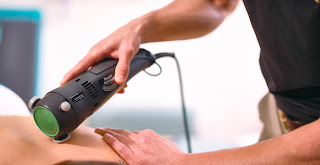Two Secrets to a Huge PR
In my race report of Ironman Vineman 2016, I brought up a number of psychological factors that helped bring me to the finish line faster than I had ever finished before. Most of these revolved around the idea of minimizing time expectations, getting back to the root joy of the sport, and just slowing down. It would be wrong for me to ignore, however, the more physical changes I made to my training that helped lead me to a greater result. It was a combination of all of these things that brought me closer to a perfect race.
I’d like to list here a couple of things I did differently this year while training for Vineman vs. previous races. These are somewhat untrendy in the triathlon community presently, but I believe that they have the potential to be game changers if employed correctly. I for one am anxious to see how they will continue to benefit me in the coming years.
Coming off of a challenging 2015 racing season which saw me heavily fatigued and generally burned out, I knew that some things needed to change, and I needed to be smarter about how I approached this sport if I wanted to improve. Each of the following represents something new that I had incorporated into training that I believe worked well for me. Each of these game changers has to do with recovery and physical preparedness.
-
Breathing. It turns out, and I know this is quite shocking, you need oxygen to perform. But let me be more specific. The breathing method I am talking about is the Wim Hof Method (WHM). This method is becoming quite popular due to recent publicity by Tim Ferris (author of The Four Hour Body), Joe Rogan, and Laird Hamilton. The technique is quite simple, and easy to employ before a workout or race. Simply put, it’s a series of about 30-40 deep breaths followed by breath holds. You can follow along in a free demonstration by following this link. There are a lot of claims about the benefits of this technique, and I would advise you to investigate them yourself, because my results are simply anecdotal. I haven’t read much on triathletes using this method, but there’s a lot of evidence to suggest that it helps improve endurance and strength by fully saturating the muscles with oxygen, and detoxifying the blood stream. What I found when I do about 4 rounds of this method every morning and before a workout is that my energy is increased, my mood is immediately improved, and I am generally able to perform my workout more effectively. When I applied this method at each of my races so far this year, I have found that I am more energized for the swim start, and have zero anxiety for the first few hundred meters. I’ve also seen my sustained energy and endurance improve. In addition to the breathing, the cold exposure training employed in this method really helped me to adapt to more extreme temperatures. While it didn’t get extremely hot on the course at Vineman, I was not nearly as affected by the low temperatures in the morning and the high temperatures as I otherwise would have been.
-
The second game changer I found quite by accident. I wasn’t going to visit my massage therapist before Vineman, but my wife convinced me, and I decided to book a last minute appointment. My therapist had been raving about this new machine she has been using, and how it was improving the mobility and recovery of her patients. This was my first introduction to Rapid Release Technology, and it had every one of my muscles singing praises. When active, the unit vibrates at a very intense frequency, which breaks up knots, relaxes the muscles, and eliminates cramps. By loosening up all of the muscles, blood flow is no longer restricted, and oxygen is free to flow to all of the muscle groups. When I finished the massage, my whole body was buzzing. Much to my surprise, my therapist invited me to take one of the RRT units with me up to Vineman with the instructions to use it after the drive up, and the night before the race. I did as instructed, and my body felt fresher than for any other race in which I had previously participated. I’ve always struggled with tight muscles the day before an Ironman because of all of the preparation involved (checking in and checking the bike and run gear is a lot of effort on the muscles the day before an event!). Using the unit the night before loosened up all of my muscles and eliminated any pre-race soreness that I typically experience around my calves. During the race I was surprised to discover that I did not cramp one bit, and it took much longer for my legs to get fatigued. This means that I was able to delay slowing down until nearly the end of the race, the best result one can hope for in an Ironman! Since the RRT loosened up my muscles to the point that they could maximize oxygen saturation, my muscles were better able to utilize that oxygen more efficiently and effectively over a longer period of time.
